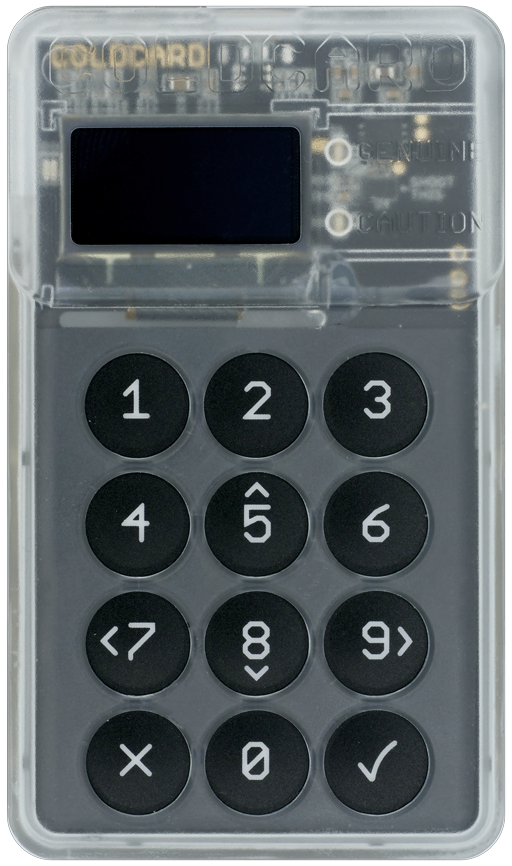Coldcard is a Cheap, Ultra-secure & Opensource Hardware Wallet for Bitcoin. Get yours at ColdcardWallet.com
Follow @COLDCARDwallet on Twitter to keep up with the latest updates and security alerts.
Do a checkout, recursively to get all the submodules:
git clone --recursive https://github.com/Coldcard/firmware.git
Then:
cd firmwaregit submodule update --init(if needed?)brew install autogenvirtualenv -p python3 ENV(Python > 3.5 is required)source ENV/bin/activate(orsource ENV/bin/activate.cshbased on shell preference)pip install -r requirements.txt
Setup and Run the Desktop-based Coldcard simulator:
cd unix; make setup && make; ./simulator.py
Building the firmware:
cd ../cli; pip install --editable .cd ../stm32; make setup && make; make firmware-signed.dfu- The resulting file,
firmware-signed.dfucan be loaded directly onto a Coldcard, using this command (already installed based on above) ckcc upgrade firmware-signed.dfu
Which looks like this:
[ENV] [firmware/stm32 42] ckcc upgrade firmware-signed.dfu
675328 bytes (start @ 293) to send from 'firmware-signed.dfu'
Uploading [##########--------------------------] 29% 0d 00:01:04
You'll probably need to install at least these packages:
brew cask install xquartz
brew install sdl2
brew cask install gcc-arm-none-eabi
Used to be these were needed as well:
brew install sdl2
brew tap PX4/px4
brew search px4
brew install px4/px4/gcc-arm-none-eabi-80 (latest gcc-arm-none-eabi-XX, currently 80)
You may need to reboot to avoid a DISPLAY is not set error.
You'll probably need to install these (Ubuntu 16):
apt install libudev-dev python-sdl2 gcc-arm-none-eabi
If you get stuck on the "Skip PIN" screen after the startup, edit the pyb.py file located under /unix/frozen-modules/ and follow the instructions from line 27 to line 31:
# If on linux, try commenting the following line
addr = bytes([len(fn)+2, socket.AF_UNIX] + list(fn))
# If on linux, try uncommenting the following two lines
#import struct
#addr = struct.pack('H108s', socket.AF_UNIX, fn)
Top-level dirs:
shared
- shared code between desktop test version and real-deal
- expected to be largely in python, and higher-level
unix
- unix (MacOS) version for testing/rapid dev
- this is a simulator for the product
testing
- test cases and associated data
stm32
- embedded micro version, for actual product
- final target is a binary file for loading onto hardware
external
- code from other projects, ie. the dreaded submodules
stm32/bootloader
- 32k of factory-set code that you cannot change
- however, you can inspect what code is on your coldcard and compare to this.
hardware
- schematic and bill of materials for the Coldcard
unix/work/MicroSD
- files on "simulated" microSD card
Found a bug? Email: [email protected]


